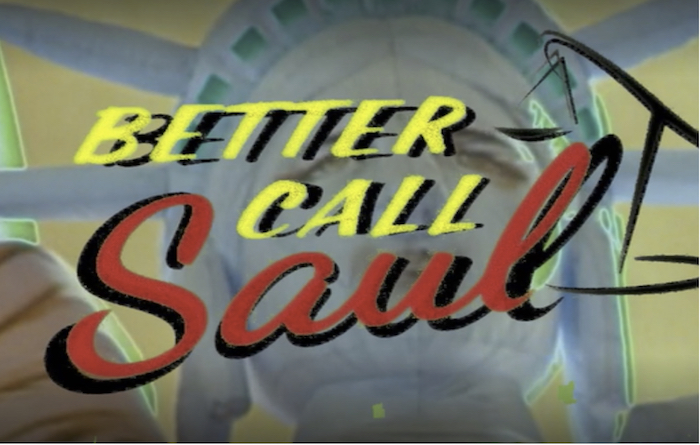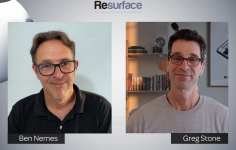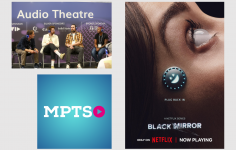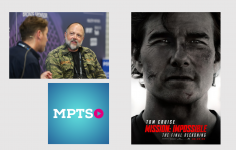In this first instalment of Scene : Heard, we look at Season 1 Episode 1 of Better Call Saul.
Our guest is Larry Benjamin, re-recording mixer on the show and to whom we spoke recently about his audio post podcast Smartcast.
February 2015 saw the premier of Better Call Saul, a prequel to the worldwide phenomenon that was Breaking Bad. The spin-off origin story of Jesse and Walt’s lawyer and sometime-accomplice Saul Goodman. Their meth empire and their lives having spiralled out of control and ultimately unravelled, we last saw Saul heading for a new life in Omaha, Nebraska. (Oops, sorry. Spoiler Alert. Too Soon?).
It is an understatement to say that Better Call Saul had an eager and expectant audience lying in wait. Episode 1 broke the record at the time for highest ratings for a scripted series premier on US basic cable. It’s fair to say we wanted to know.
What we got was a ground-breaking opening scene. On one hand, instant gratification; we get three minutes of present-day Saul as ‘Gene’ the innocuous-looking Cinnabon employee in an Omaha mall. Alive, but seemingly haunted by an unforgiving past which could catch up with him at any moment.
Abrupt cut to opening titles – themselves disarmingly offbeat – and then we’re right where we expect to be: The Back Story. A younger Saul, Jimmy McGill as he was back in 2002, preparing for his opening argument in court. However, we’re a joyful seven minutes into episode 1 now, and we haven’t had a single line of dialogue. Not A Word.
S’All Good, Man
RESURFACE: I recall being struck by that at the time, in fact you and I exchanged emails about it that same night. How did this come about, from a creative and directorial standpoint? Millions are watching and nobody on screen says anything. For ages. Presumably someone, somewhere, must have questioned it?
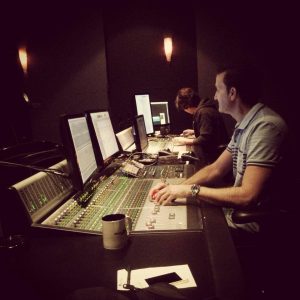 LARRY BENJAMIN: Actually, no. Coming off Breaking Bad, Vince Gilligan and Peter Gould (co-showrunners) had the autonomy to do what they wanted to do. No focus groups, just total trust in their vision.
LARRY BENJAMIN: Actually, no. Coming off Breaking Bad, Vince Gilligan and Peter Gould (co-showrunners) had the autonomy to do what they wanted to do. No focus groups, just total trust in their vision.
R: In the vacuum you intentionally create with no dialog, the audience’s collective ear is drawn all the more to what remains. Tell us about it.
LB: My FX mixing partner Kevin Valentine and I worked closely with Nick Forshager (sound editor) and Vince and Peter to create this scene. Not everything you see on screen has an associated sound effect, the foley isn’t lush or full or pragmatic, it’s hyper-realistic and stark. Part of that was choosing what to accentuate and what to ignore. The buzz of fluorescent lighting in the silent courtroom, the ice in the stenographer’s soda and the slurp when she drinks, the clunks and whirrs of the VHS machine. All evocative sounds which, when picked out and accentuated, create this tense, expectant environment.
R: And the bizarre title sequence, how did that come about?
LB: Choosing the title sequence was a long process. Everything else on TV is moving towards the lush and the epic, but Vince wants to zig when everyone thinks he’ll zag. Everything about it is deliberately disarming, the lo-tech VHS graphics where the drop shadow disappears for no reason, the fact that the timing of cuts to it and out of it are, by all the accepted rules, wrong.
Sound Sensibility
R: Is Vince Gilligan a Director who appreciates sound and what it can do in support of his art, or is he just intent on messing with people’s heads in general, sound being just another weapon in his arsenal?
LB: Sound is a character in Vince’s shows, in the same way location is. For Breaking Bad, the reason it was set in Albuquerque was originally budgetary, but now Albuquerque is a character in this world. There are certainly directors with a ‘sound sensibility’, George Lucas being a great example, and Vince is definitely one of them. Same goes for music – there’s restraint, little or no underscore in his shows, but there are specific and very carefully chosen music elements, this scene demonstrates that very well, too.
R: Does that ‘sound sensibility’ add to the scrutiny you’re under? Lots of notes?
LB: Yes and no. In some respects it can. On one hand I’ll have a note about a particular shoe squeak, there’s that attention to detail. On the other hand, where the subject matter is more abstract or ethereal I’ll generally be given total freedom. There are a few scenes in the second season where I could run wild, like the voices in Chuck’s head, the MRI scene, not one note!
Resurface thanks Larry Benjamin for his insight into this single yet remarkable few minutes in his extensive catalogue of work. If you haven’t already, catch Better Call Saul Seasons 1 & 2, available on Netflix and Amazon Video.
